Bosnia Herzegovina dragged for decades the stigma of war . Although 25 years have passed since the end of the conflict in the Balkans , many continue to associate this small boxed-in country between Croatia and Serbia with the last great armed confrontation that Europe suffered in the 20th century.
But Bosnia, luckily, has much more to offer than his wounds . Including a natural park that can compete with the best protected areas on the continent for hiking.
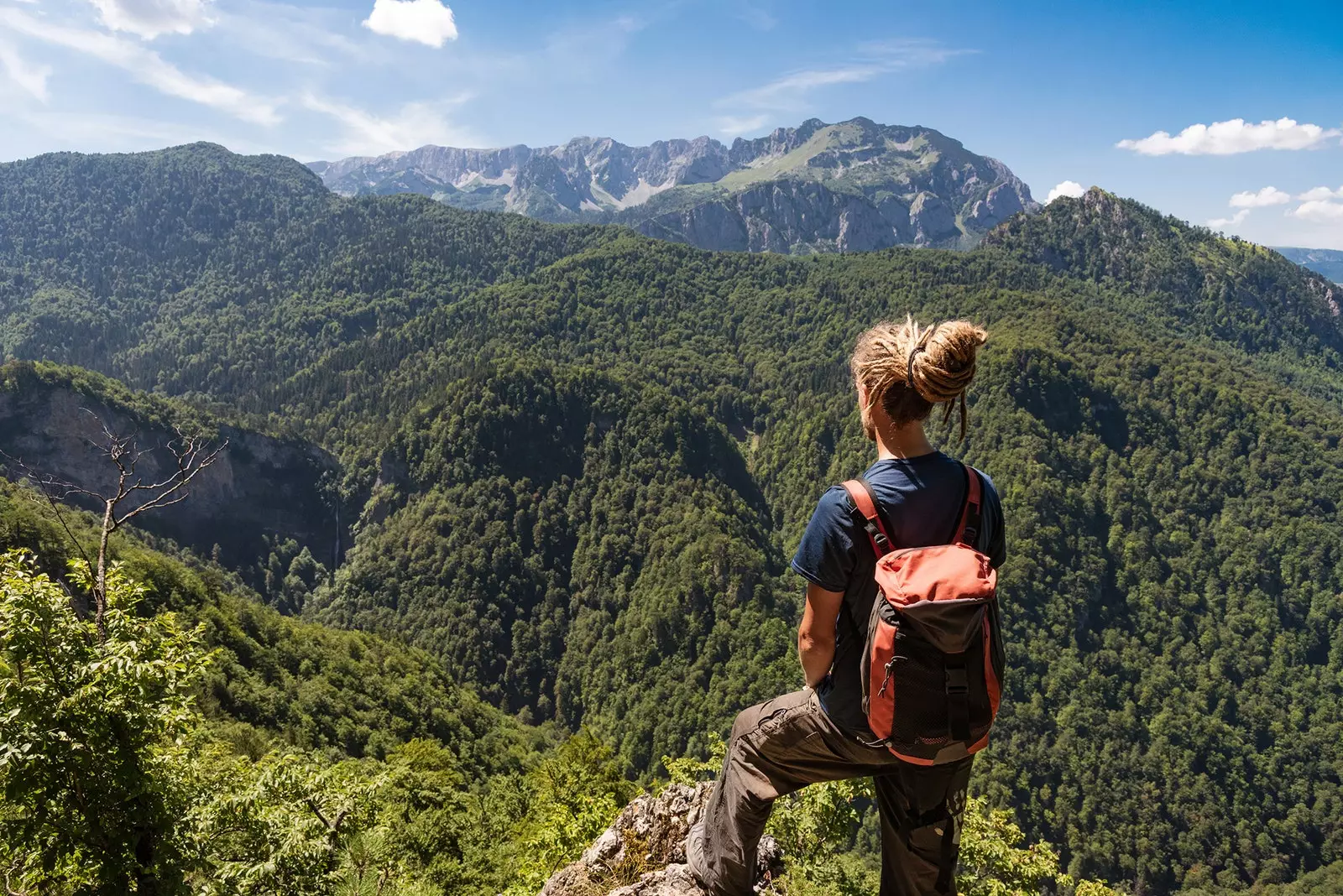
View of the primary forest of Perucica
In the extreme south of the country, right next to Montenegro and in the central part of the Dinaric Alps, is the National park Sutjeska . A natural space around 175 square kilometers with plenty of incentives to get away for a few days from the crowded Croatian and Montenegrin coasts. Or to escape from the vibrant sarajevo and enjoy a good dose of nature and tranquility.
To get here, the usual route starts from the Bosnian capital and passes through Seal , the closest city to the park. If you come from the coast and the surroundings of Dubrovnik you have to take the road that crosses the city of Trebinje , in the southwest of the country. In either case, it will be Tjentiŝte , the small town - a cluster of houses and other buildings scattered on both sides of the road - in the heart of the Sutjeska river valley . And the best place to stay and explore the area.
One point to keep in mind when visiting the park is the little information available on the ground if not prepared the trip in advance . Even so, if you have any specific questions about the routes or services in the area, the best places to ask are the reception of the Hotel Mladost and the small tourist office next to the **Komlen restaurant**, both at the foot of the road. By the way, having your own vehicle is essential to get to know the park in depth.
THE PRIMARY FOREST OF PERUCICA
The **natural jewel of Sutjeska is Perućica**, one of the very few primary forests that are still in Europe. Or what is the same, a forest area of just over 1,400 practically virgin hectares and that it has not been exploited or fragmented by human action.
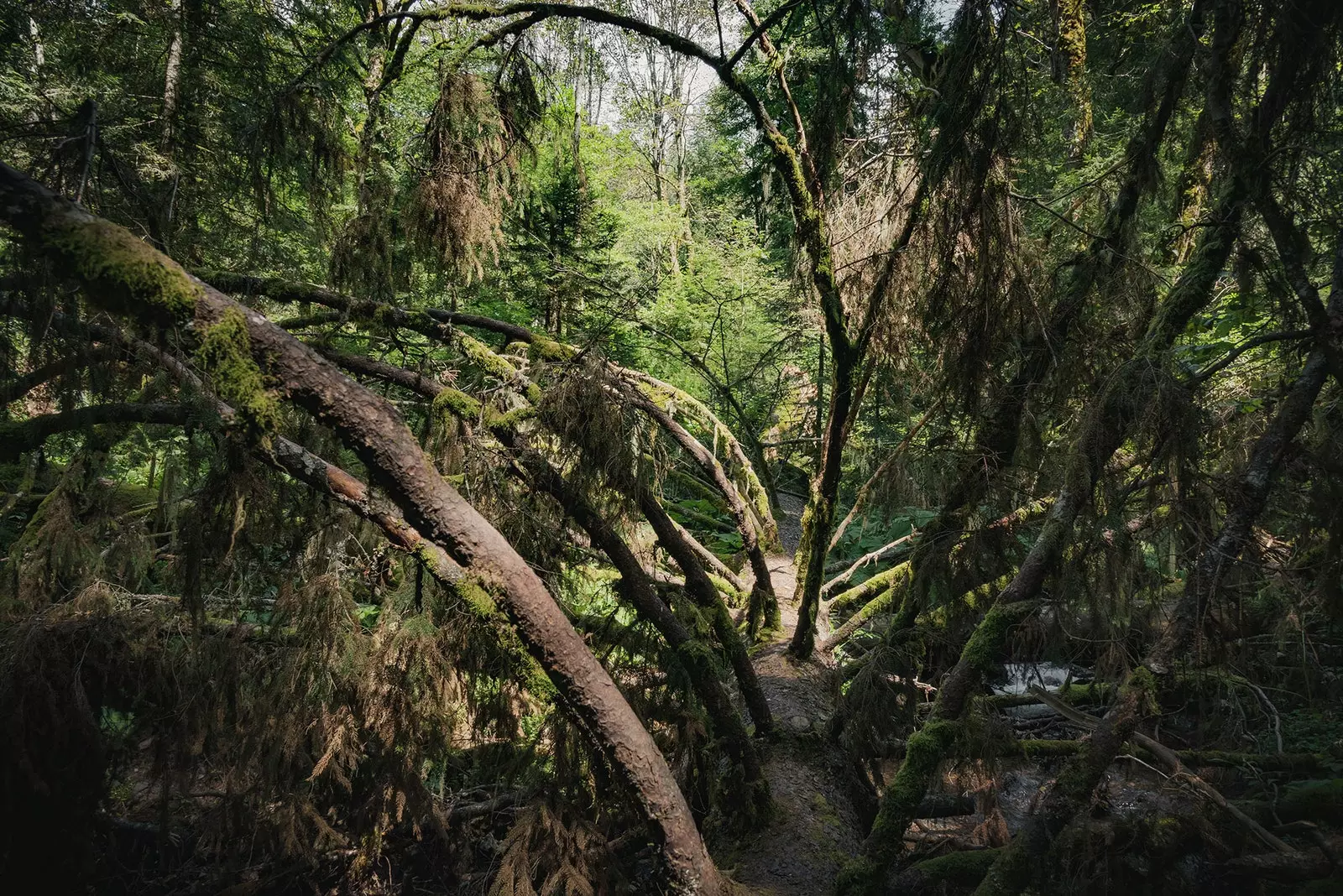
Inside the primary forest of Perucica
This very special forest is a combination of towering beech, fir and spruce who struggle to show their cups towards the sky. An environment with such dense vegetation that, seen from above, it seems impenetrable.
In fact, if you want to visit the interior of Perucica necessary Hire an official park guide. Only small groups are allowed and access on your own is strictly prohibited. Once inside, in addition to a unique biodiversity , it is possible to feel very close the Skakavac waterfall . A waterfall from more than 75 meters that makes a loud noise when it hits the ground.
For those who prefer to avoid the necessary walk to reach the inside the forest there is an alternative. Since Tjentiŝte There is an asphalt and dirt track that goes up to the natural park. Shortly after passing the control of the guards we will arrive at Dragos Sedlo (1,264 meters). On the right side of the road there is then a small path that leads to a viewpoint with probably the best views of Perućica and the park as a whole.
THE HIGHEST MOUNTAIN IN BOSNIA
Continuing along the same road, and after taking the first detour to the right, we will immediately arrive at Prijevor (1,668 meters). Gone are the huge trees that characterize the lower areas of the park. Here the silhouettes of the s peaks over 2,000 meters that frame the valley. And among them stands out the Maglic (2,386 meters).
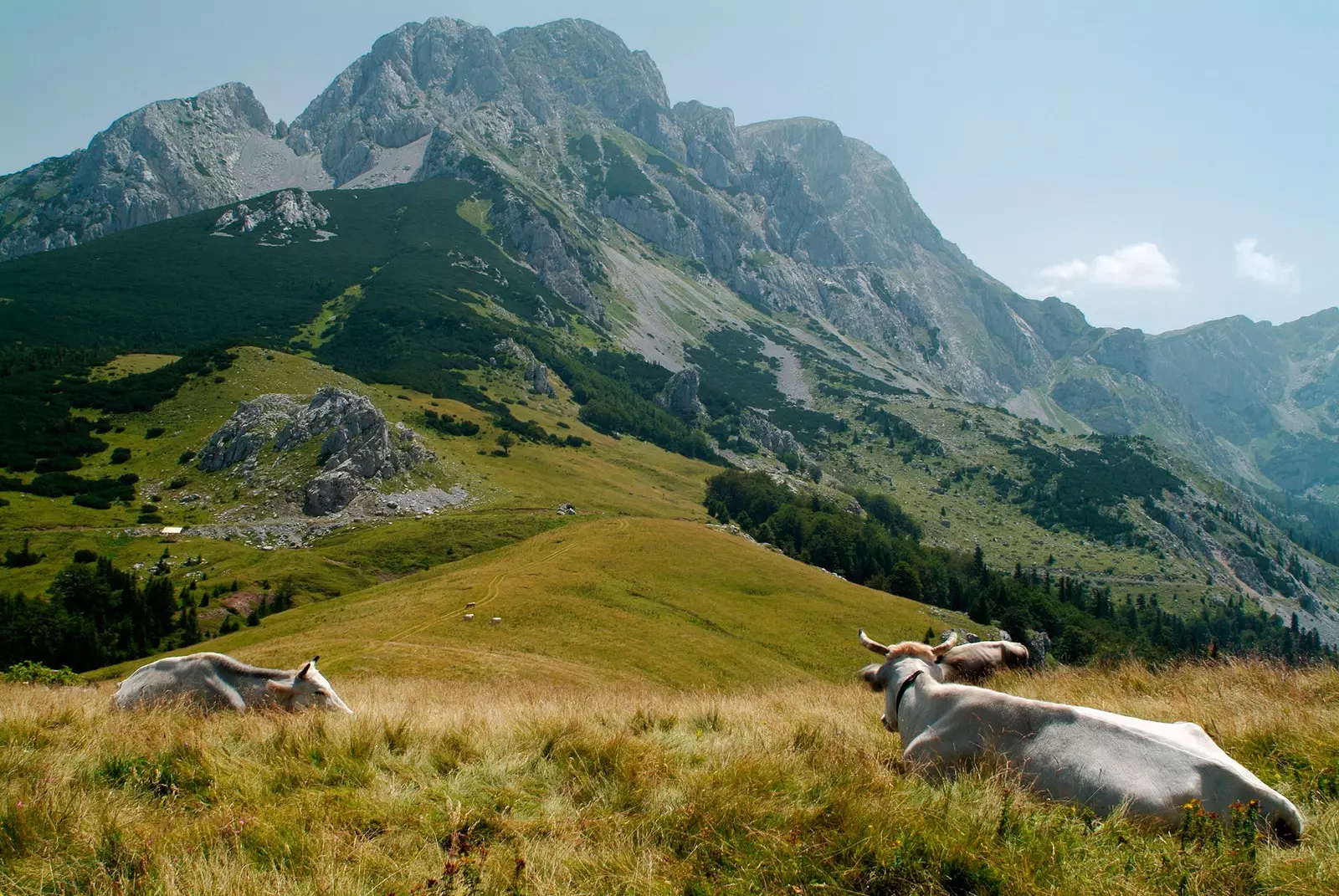
Magli?, the highest mountain in Bosnia
The highest mountain in Bosnia is right on the border with the neighboring country, Montenegro. . To undertake your ascent you need some basic knowledge of climbing and technical equipment. If you simply want to enjoy its imposing figure from a distance, the Prijevor car park is the right place to leave your vehicle and explore the surroundings. Just 500 meters away, at the foot of imposing Magliç , there are several mountain refuges that in the summer months take care of radovan . A local shepherd who also works for the park.
From this point there is a beautiful excursion towards the Trnovačko glacial lake. A route of about 5 kilometers that will take us, almost without realizing it, to Montenegrin territory – it is recommended to carry your passport with you. To return, you can retrace the same path or go around the lake and complete a route that includes the ascent and descent of the Magliç.
Although this slope is the most accessible, the natural park has another area full of attractions. On the opposite side of the valley that forms the Sutjeska River is he Zelengora mountain massif . To get into this area you have to take another forest track that leaves from Tjentiŝte . After 15 kilometers and a multitude of curves we will arrive at Donje Bara , a mountain refuge on the shore of a lake. Several trails start here to explore the area.
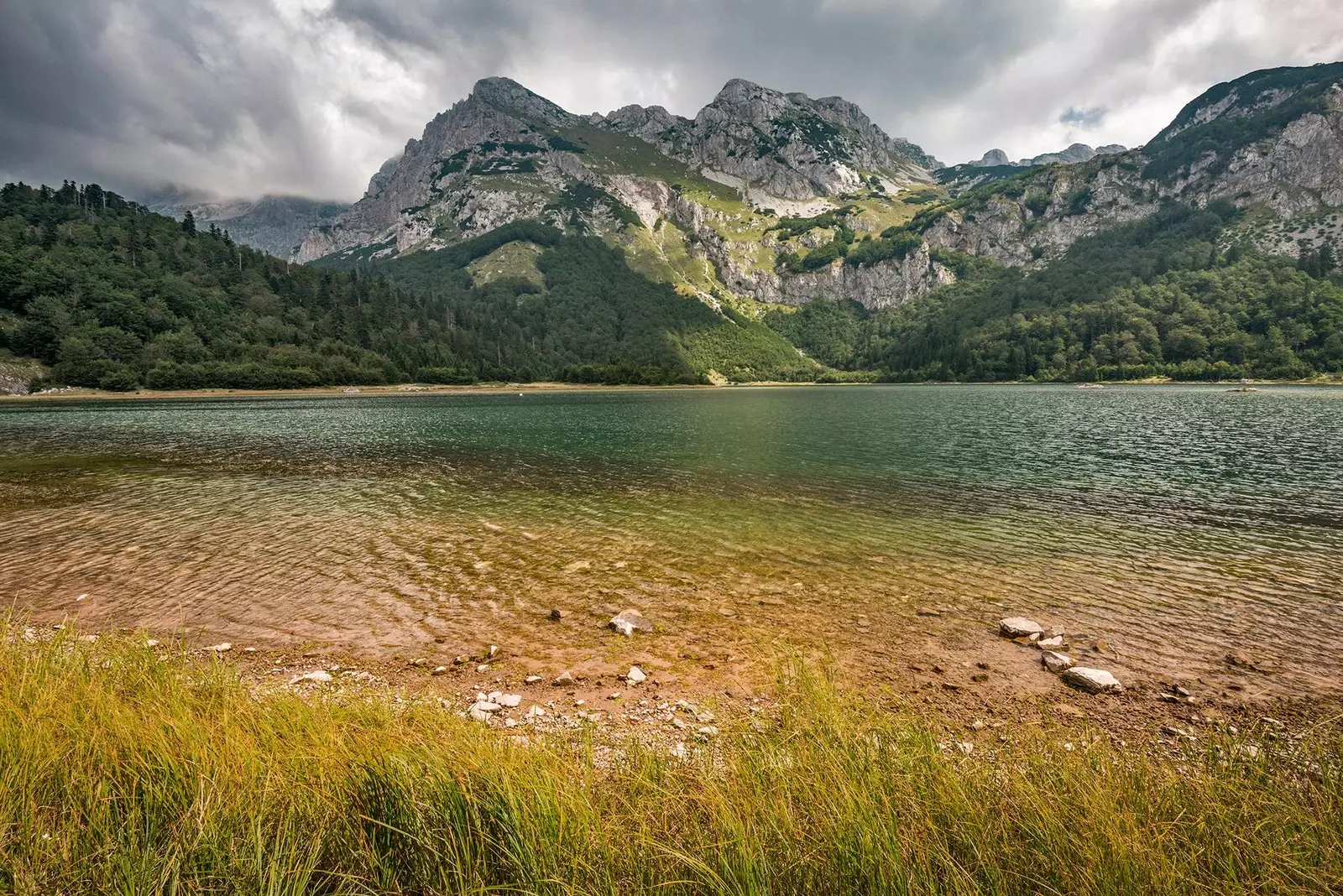
Trnova?ko glacial lake
THE BATTLE OF SUTJESKA
If we ask any citizen of any of the countries that formed the former Yugoslavia what the name Sutjeska suggests to them, the answer is clear: here, in the mountains surrounding the river of the same name, one of the most important battles of the Second World War.
In May 1943 the Axis Powers led by Nazi Germany launched an offensive against the partisans of the national liberation army. The main objective was to capture their commander, Marshal Josip Broz Tito –later president of the extinct Yugoslavia . The victory of the Axis seemed sung: his troops practically quintupled those of the partisans.
But the unthinkable happened. The forests, mountains and slopes that today make up this natural park they were hell for both sides . An impossible battlefield in which the partisans, better acquainted with the terrain, managed to resist paying with the lives of nearly 7,000 soldiers.
The popular culture of the new state that emerged after the war turned the battle of Sutjeska in a myth. A reason for military and identity pride that Tito was in charge of haranguing. Also through the 1973 film The Fifth Offensive (Sutjeska, in its original version), the most expensive production in the history of Yugoslav cinema and starring the British star Richard Burton.
The symbolism of this place is made clear by the grandiose war memorial in the central part of the valley. Unmistakable from the road through Tjentiŝte. The work, built in the 70s of the last century, it is a gigantic sculpture of socialist style. Its two apparent wings represent two columns of partisans breaking through the Nazi siege. A tribute to the fallen and one last surprise to discover in the heart of the Balkans.
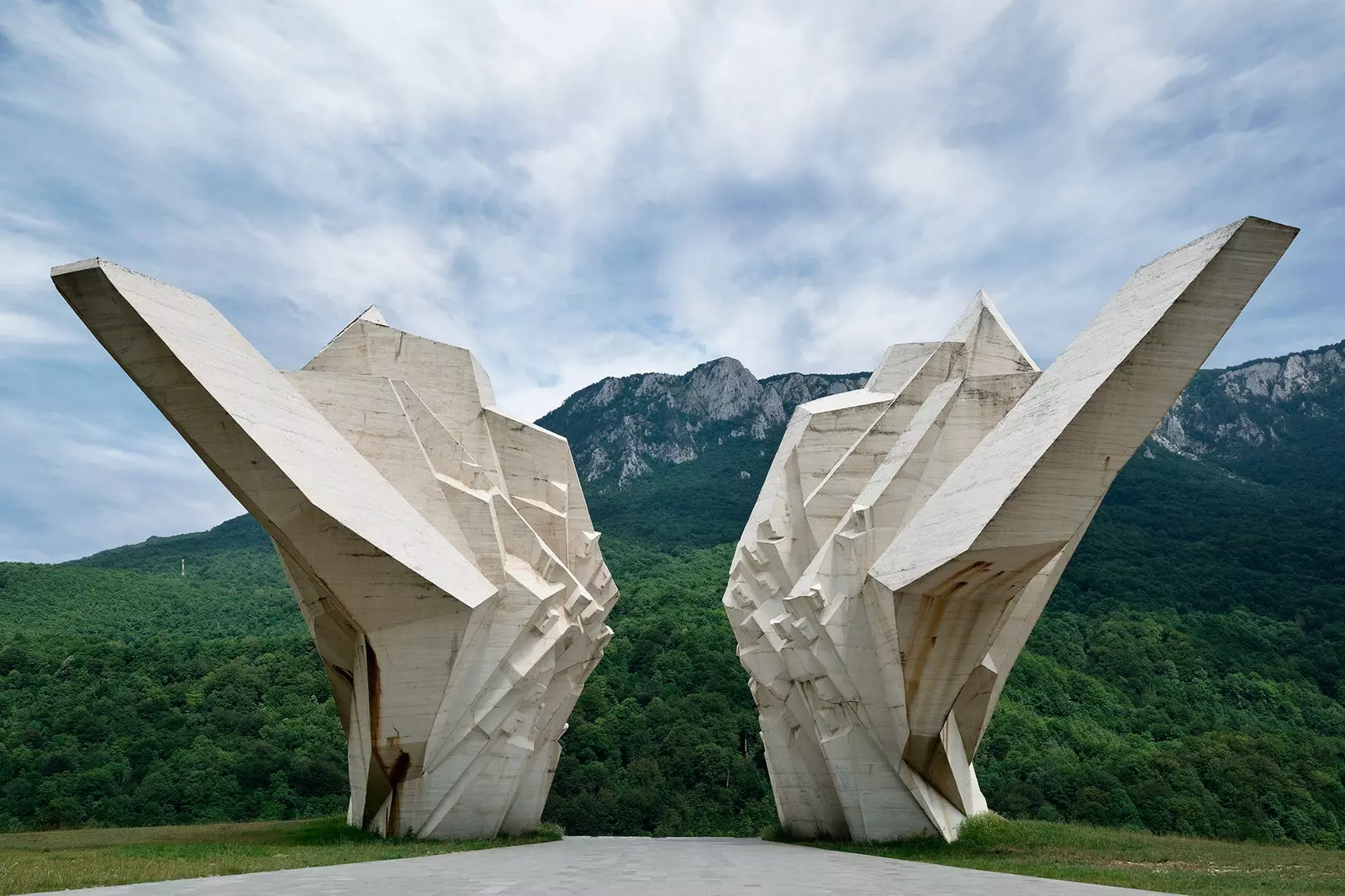
The grandiose memorial of the Battle of Sutjeska
